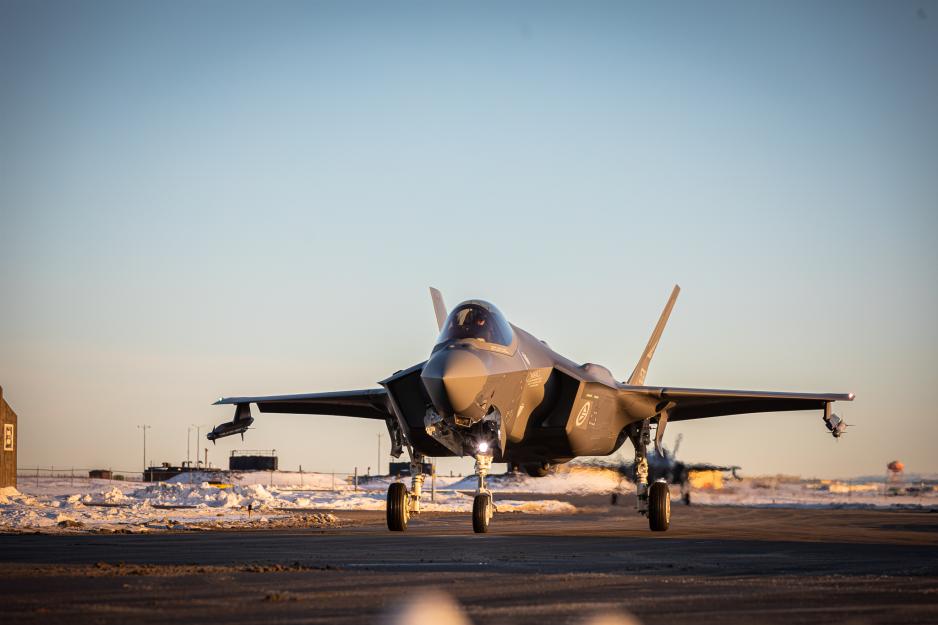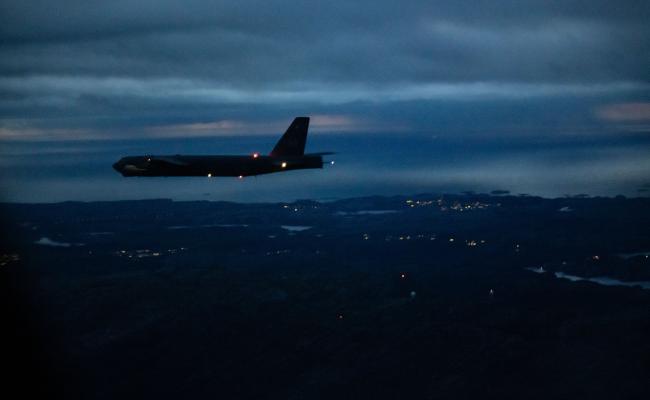The High North and the F-35 Lightning II

A Norwegian F-35 fighter jet in Iceland for the NATO operation Iceland Air policing. (Archive photo: Ole Andres Vekve/the Norwegian Armed Forces)
Op-ed: Norway recently received the last of the 52 F-35 fighter jets ordered from the US. In this op-ed, US Army Veteran and Historian Mike Thornton provides an overview of the fighter jet and its capabilities in the defense of the High North.
This is an opinion piece written by an external contributor. All views expressed are the writer's own.
Lockheed Martin just announced that the Royal Norwegian Air Force completed delivery of their 52nd Joint Strike Fighter aircraft, the F-35. Norway has become the first nation to fulfill its initial acquisition. Here, we provide a brief overview of this aircraft and its capabilities to defend NATO and the High North. (Underlined items are what I consider to be core capabilities.)
The history of fighter aircraft began in World War I. Technology has always played an important role in fighter development. To explain the success of the RAF in locating Nazi aircraft at night; the British announced that their pilots ate lots of carrots allowing them to see in the dark. Of course, radar was the method, but the subterfuge helped cover up the advancement in technology.
The F-35 Lightning is a fifth-generation fighter, as such it is stealthy. That means it has a low radar signature which makes it difficult for enemy radar to acquire or target. Training and combat in the High North will require an aircraft that can penetrate threat airspace and return home. Future battlespace might be over the Kola peninsula in the Russian Arctic or over enemy ships in the Norwegian sea.
In any future Arctic conflict, we must establish air dominance
The Lightning II is designed to be air-to-air dominant. Future combat will require the freedom of maneuver for our land and maritime forces.
To provide that freedom, the F-35 must keep our airspace clear of enemy fighters. The F-35's radar, coupled with its weapons, allows it to acquire an enemy and engage beyond visual range (BVR) to defeat any known opponent while remaining undetected.
Interdiction of threat forces before they reach the High North
This aircraft can also excel at the air-to-ground mission. It can travel great distances, air-to-air refueling adds additional range, and strike with precision against defended targets. When even greater capability is required, the Joint Air-to-Surface Standoff Missile (JASSAM) can offer the commander a deep strike, an accurate method of interdiction to defeat high-value targets.
The ability to defend at long range against land or sea threats gives a groundbreaking new capability and will require a lot of planning for these newly developed weapons. Coincidently, the latest NATO Combined Air Operations Center (CAOC) is being established in Norway. This is where detailed mission planning will take place.
For more on what a COAC does:
While accomplishing any other assigned mission, the suppression of enemy air defenses will require the ability to collect, prioritize, jam or attack enemy radar or air defense missiles.
The F-35 can defend itself, which is unprecedented as prior to this, a separate aircraft was flown to accomplish the electronic warfare mission.
This aircraft collects threat and other data and shares it with friendlies
Electronic signals collection. The modern battlespace is alive with electronic emissions.
The F-35 can receive these signals and re-transmit them in real time to other aircraft, ground commanders, maritime forces, and the CAOC.
This data could consist of the location of ground or sea threats, enemy radar emitters, missile launches, and signals intelligence locating enemy command and control centers.
Training involves commanders and mission planners as well.
Worldwide, thousands of pilots and maintainers have been trained to operate the F-35. This fighter's new tactics and capabilities require not just proficient pilots and crews but commanders and mission planners who have learned to think about air warfare in this revolutionary new dimension.
The High North air operations have been a joint venture for some time. Soon, Finland is expected to field the F-35 and deploy it in the Lapland Air Wing. Denmark, Belgium, Netherlands, and Poland are in the process of fielding their F-35s. We can expect Nordic Air Forces, along with other NATO members, to work together to plan and train advanced air operations.
The F-35 owns the night
The special helmet that the F-35 pilot wears is linked to the Electro-Optical Targeting System (EOTS). This multi-function system allows for precision targeting capability in the air-to-air or air-to-surface targeting mode. The system allows pilots to conduct surveillance in an area of interest and to strike with precision weapons.
Infrared imagery allows the pilot to fly at night without the need for night vision goggles. It combines forward-looking infrared with infrared search and tracking. With extended periods of darkness during the winter, no other part of the world needs enhanced night flying capability more than the High North.
The ability to determine friend or foe at expended ranges has been around for some time. This aircraft will also display threat and friendly symbology to provide safeguards against friendly engagements on land or at sea. Fratricide is an ever-present risk using modern weapons, any method to mediate the risk should be a high priority.
In summary, when flying in or near the battlespace, the F-35 automatically displays, updates, and retransmits vast amounts of data. It presents to the pilot the information he needs about threats to provide him with situational awareness as new issues develop.
The F-35 is a giant leap forward in technology and weapons development. It should provide security and maintain the sovereignty of the High North for years to come.




